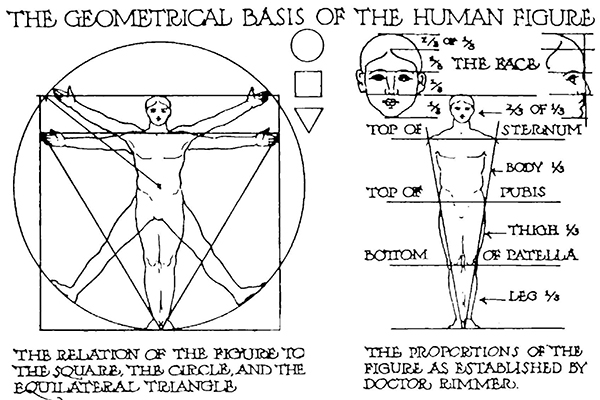Proporzioni e geometria del corpo umano nel disegno manuale prodromici alla rappresentazione digitale
DOI:
https://doi.org/10.15168/xy.v6i11-12.2510Parole chiave:
Antropometria, Bosse, Figura umanaAbstract
Il disegno del corpo è un tema da sempre attuale. In passato era legato prevalentemente alle arti figurative, oggigiorno è riferito a tutti gli ambiti del progetto, in architettura, nel design del prodotto e nella moda. Proprio per la sua trasversalità il disegno del corpo è stato oggetto di rappresentazioni sia analogiche che digitali. Se le modalità con le quali è stato rappresentato si sono adeguate nel tempo alle innovazioni tecniche e digitali, i principi geometrici e proporzionali alla base del disegno della figura umana sono rimasti pressoché invariati. Proprio la permanenza fino ad oggi nella modellazione digitale del corpo umano dei rapporti proporzionali codificati a partire dal Rinascimento, costituisce l’interesse da cui principia la presente ricerca. Se nel Rinascimento erano ben noti i principi per la rappresentazione degli spazi architettonici nelle opere artistiche, meno affrontati dalla trattatistica erano i principi per la costruzione dell’immagine delle figure umane in esse presenti. Il contributo analizza nell’ambito della trattatistica dell’epoca la sezione del volume di Abraham Bosse in cui l’autore introduce un metodo per il disegno e anche per il rilievo del corpo umano, sintetizzandolo con uno schema a nodi definito dallo stesso autore “a filo di ferro”. Tale schema diventa il punto di partenza per costruire graficamente e con l’ausilio delle tecniche del disegno a mano libera la rappresentazione delle forme anatomiche e quindi del panneggio dell’abito indossato. L’analisi grafica a supporto della trattazione pone a confronto le dimensioni tra le parti anatomiche nei sistemi di misura del tempo ed attuali.

##submission.downloads##
Pubblicato
Come citare
Fascicolo
Sezione
Licenza
Copyright (c) 2023 XY. Studi sulla rappresentazione dell’architettura e sull’uso dell’immagine nella scienza e nell’arte

Questo lavoro è fornito con la licenza Creative Commons Attribuzione - Non commerciale - Condividi allo stesso modo 4.0 Internazionale.

